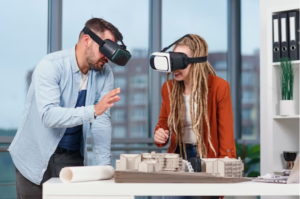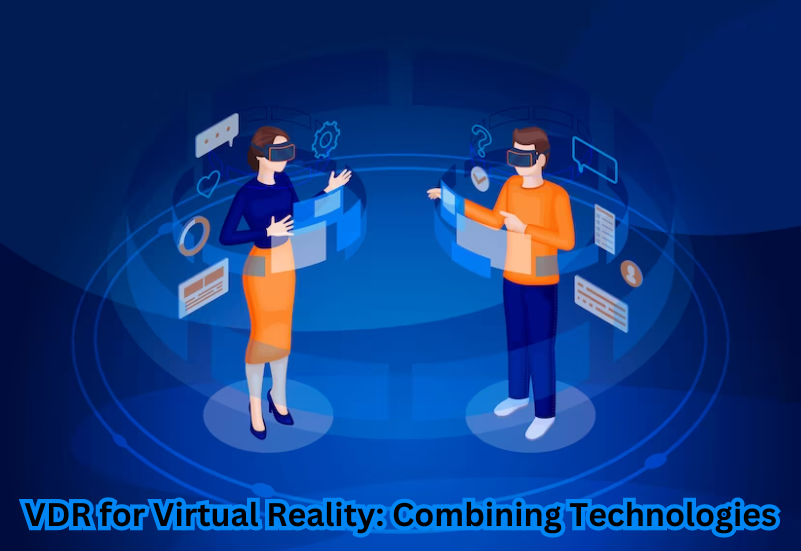Imagine entering a gorgeous virtual environment, finding ancient ruins in crystal-clear water, or hiking distant mountains. Imagine sharing this fantastic experience with coworkers, investors, or everyone else without compromising safety or control. VDR for Virtual Reality (VDR-VR) combines the infinite realm of VR with the safe refuge of Virtual Data Rooms.
As exciting as this sounds, let’s step back before we put on our VR headsets and dive in.
What is a VDR? Why is it important?
Online VDRs are safe places to communicate confidential documents and data for due diligence, intellectual property licensing, mergers, and acquisitions. Like a digital vault, it has numerous layers of encryption and access controls to restrict who may see, download, and collaborate on articles.
VDRs let individuals collaborate while protecting private data in today’s connected society. They speed communication, reduce travel and paperwork, and secure, trackable document interactions.
Now, let’s dive into the interesting world of VR.
Virtual reality has caught people’s attention in many fields, from tech to entertainment to healthcare. Since VR glasses take us to virtual worlds, it’s no surprise that companies see it as a huge opportunity for training, showing off products, reviewing designs, and creating engaging marketing experiences.
However, sharing these VR experiences safely has been hard, especially ones that hold private data or intellectual property. Traditional ways of sharing files open data to attack, and current VDR systems can’t handle immersive VR material.

Here comes VDR-VR: a world where safe teamwork meets engaging experiences
This is where VDR-VR comes in and changes everything. Imagine a specific VDR platform that works without problems with well-known VR machines and engines. The VDR lets you share private VR experiences like architecture walkthroughs and product prototypes. The VDR’s safe sandbox allows authorized users to explore these lifelike settings, look at details, interact with items, and communicate in real-time with VR glasses.
How does it work, though?
Usually, VDR-VR platforms use special VR streaming technology. The platform transmits approved users’ compressed data packets in real-time to their headgear, not full VR experiences. This minimizes file size and connectivity demands while guaranteeing a secure and seamless VR experience.
There are many good things about VDR-VR systems, such as:
- Better security: Users’ private VR experiences are never saved or kept on their devices, so there is less chance of leaks or unauthorized access.
- Granular Access Control: You can decide who can see certain VR experiences in the VDR and allow them to watch, connect, and work together.
- Detailed Audit Trails: Keep track of everything a user does in the VR experience to ensure everything is clear and everyone is responsible.
- Better Teamwork: Work together on VR projects in real-time, giving comments, making notes, and even working together virtually in the immersive world.
- Reach people worldwide: Share VR experiences with teams and partners in different places without having to travel or deal with physical restrictions.
Unlocking the promise in many fields
Many uses for VDR-VR go far beyond just sharing amazing VR experiences. Think about these situations:
- Architecture and engineering: Put clients in the middle of virtual building tours to help them understand better and get project approvals faster.
- Product Development: Show investors and business partners private prototypes in a safe virtual reality space that lets them give feedback and work together in real-time.
- Surgical Training: Train surgeons and other medical workers using realistic VR models that don’t put patient data at risk.
- Remote checks: You can save time and money by doing virtual checks of assets and buildings anywhere in the world.
As VR technology improves and VDR-VR options get easier, how businesses use virtual experiences will likely change significantly. With VDR-VR, you can keep secret prototypes safe and hold training sessions for people worldwide. This opens the door to a future where security and cooperation go hand in hand, even in the strange worlds of virtual reality.
Put on your VR device and get ready to dive into the exciting world of VDR-VR, where your mind can only stop you.
FAQ: VDR for Virtual Reality
Come into the amazing world of VDR for Virtual Reality (VDR-VR)! Have you ever wished you could share amazing VR experiences safely without letting anyone know about them? The key is this tech match between safe data rooms and virtual worlds. Please read through our Frequently Asked Questions to find out how you can work together, give presentations, and learn in highly secure VR settings. Get ready to push the limits of safe sharing and discover a world where your thoughts are the only thing that can stop you.
What kind of tech makes virtual reality work?
VR depends on three strong things: VDR for Virtual Reality
- Headsets: These open doors to virtual worlds send you there with lifelike graphics and sound that fills the room.
- Sensors: Gyroscopes, accelerometers, and sometimes eye trackers can pick up on the movements of your head and hands and turn them into motions for your virtual character.
- Software: Engines like Unreal make beautiful 3D pictures and take care of the physics, making the virtual world come to life.

From architecture walkthroughs to medical training, VDR-VR opens doors to secure VR innovation. Explore now!
So, what does VR collaboration mean?
Adding VR to your life is like linking the real and virtual worlds. It means making VR experiences work with software, systems, and tools that are already out there. For VDR-VR, this means adding VR material to Virtual Data Rooms (VDRs) so people can safely share and work together.
Is there a big tech idea that VR and AR all fit under?
Of course! Extended Reality (XR) encompasses technologies that blur the line between actual and virtual worlds. VR, AR, and MR introduce virtual aspects to the real world.VDR-VR is a type of VR that lets you safely enjoy fully realistic virtual experiences.
VR sounds cool, but how can it be used in real life?
Hold on tight because there are so many options! VR shines in
- Immerse your workers in realistic models to learn everything from how to use complicated tools to safety practices.
- Product Design and Prototyping: View virtual architectural models or test drive prototypes before making something real.
- Market and Present: Give clients stunning tours of your latest items or wow conference attendees with hands-on demos with VR.
Remote Collaboration: Work on virtual projects in real-time from anywhere.
Also, guess what? VDR-VR adds an important layer of security, making it great for sharing private VR experiences in healthcare, building, and engineering.

